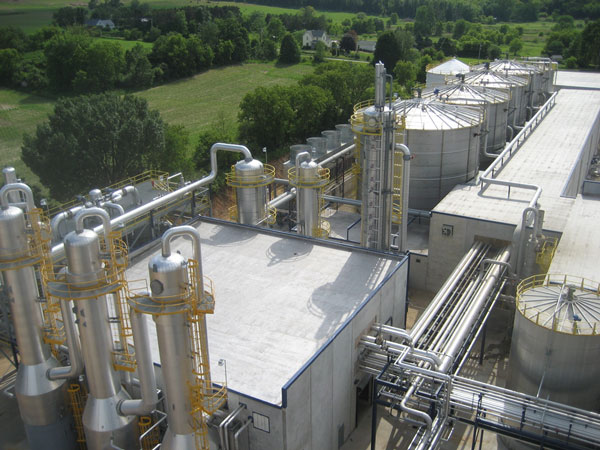New breakthrough in bioenergy
In the context of the depletion of fossil fuel sources that are increasingly depleted at the speed of human hope is expected to rely on new energy sources, including bioenergy with breakthrough development steps. few years recently.
Biofuel from fiber
Many countries, first of all, the US plans to invest heavily in bioenergy. On January 8, 2010, the US Government approved $ 2.3 billion to support green energy sources. On February 3, 2010, the Obama Administration and the US Environmental Protection Agency (EPA) jointly announced the Renewable Fuel Standard (RFS) to promote the development of biofuels. Under the plan, by 2022 renewable fuels for US traffic must reach 36 billion gallons per year (1 gallon = 3.785 liters).

Ethanol Plant
In November 2010, the EPA determined that by the end of 2011 the biofuel portion of cellulose must reach 6.6 million gallons (so note that it is from fiber rather than cassava starch as a project in the country). we must reach 800 million gallons of biodiesel, the advanced biofuel must reach 1.35 billion gallons, the renewable fuel must reach 13.95 billion gallons (!).
Earlier, on June 2, 2010, the US Department of Energy (DOE) supported US $ 5 million to develop non-food bioenergy. About advanced biofuels DOE devotes $ 80 million to support research, including a study of fuel from algae biomass, green fuel in the air .
Looking for renewable energy
The European Union (EU) decided to reduce greenhouse gas emissions and reduce the need to import petroleum by implementing the goal of replacing 10% of fuel used in transport by renewable fuels. There are 14 countries in the EU agreeing to cooperate in research and development of biofuel production. The EU devotes 37 million euros (of which 23 million Euro comes from FP7) to support this career.

There are 14 countries in the EU that do cooperation agreements
Save and deploy biofuel production.
The German government determined that by 2020 in this country renewable energy sources must at least reach 30% of the electricity rate used. The French government mobilized 1.35 billion euros to support the development of biofuels and renewable energy sources. France also mobilized an additional 2 billion euros from private to support these important projects. Finland decided in the next 10 years, mobilizing 327 million euros annually for renewable energy sources. Thanks to the development of renewable energy sources, Finland by 2020 will reduce to 7 million tons of CO2 emissions every year.
The Canadian government has requested that from December 15, 2010 on gasoline must be 5% of renewable fuels. On June 5, 2010, the Government of Canada decided to support about 4.7 million USD to help the province of Nova Scotia cultivate marine algae on a large scale to produce biofuel.
Biogas from sugarcane and straw
In terms of bio-gasoline, there have been 3 factories in Japan producing bio-gasoline in 2010 and the country has over 2,000 bio-petrol stations. These plants have converted sugarcane stalks and wheat straw into ethanol (the more we see cassava production in our country as unreasonable). Mixing 43% bio-alcohol with 57% natural gas to form Ethyl tert-butyl ether (ETBE), again mixed with 99% gasoline to form bio-gasoline. As a result, CO2 emits very little, which is of great benefit to the environment.
China, the world's largest population, has also determined to create a policy of prioritizing production and use of diesel produced from animal fats and vegetable oils. These products are exempt from tax if the amount of oil or fat is not less than 70%. In addition, China advocates the development of power sources from biomass of agricultural and forestry by-products to lower the price of each unit of electricity consumption.
- Equipment for producing bioenergy from waste
- New step in bioenergy development
- Launching Research Center for Bioenergy application
- Production of biofuels thanks to microwaves
- Scientists launch a million-dollar project to
- Robot insects explore the environment
- Cow dung will help you no longer have headache because of gas price?
- The 2018 Breakthrough Prize scientific awards are now available
- The Nobel Prize for Breakthrough by the
- New breakthrough to cure AIDS
- Don't expect a genetic breakthrough soon
- New breakthrough in pig lung transplant on people
 Is the magnetic North Pole shift dangerous to humanity?
Is the magnetic North Pole shift dangerous to humanity? Washington legalizes the recycling of human bodies into fertilizer
Washington legalizes the recycling of human bodies into fertilizer Lightning stone - the mysterious guest
Lightning stone - the mysterious guest Stunned by the mysterious sunset, strange appearance
Stunned by the mysterious sunset, strange appearance